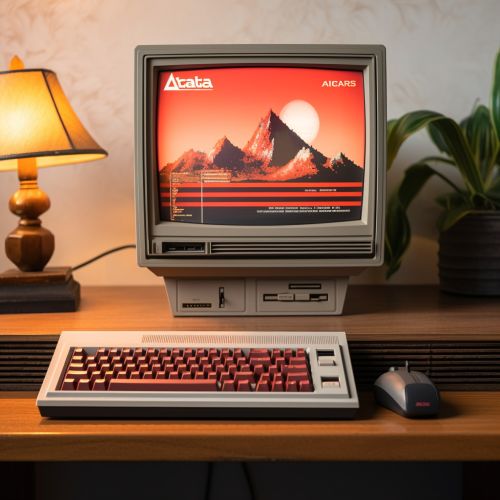Atari ST
Introduction
The Atari ST is a line of home computers from Atari Corp. that were commercially available from 1985 to 1993. The "ST" in the name stands for "Sixteen/Thirty-two", which refers to the Motorola 68000's 16-bit external bus and 32-bit internals. The Atari ST is known for its role in the music industry, as it was the first home computer with built-in MIDI support.
History
The Atari ST was born out of the ashes of the Atari 8-bit computer line and the failed 5200 console. In 1984, Atari was purchased by Jack Tramiel, the founder of Commodore, who had recently left the company. Tramiel's goal was to create a new computer that would outperform the Commodore 64 and the Macintosh.


The Atari ST was released in June 1985, a full year before the Amiga. The initial model, the 520ST, was the first personal computer to come with a bitmapped color GUI, using a version of Digital Research's GEM released that February. It was also the first home computer with integrated MIDI support, which made it popular among musicians.
Hardware
The Atari ST was based on the powerful Motorola 68000 series of microprocessors. The 68000 CPU was a significant step up from the 8-bit processors used in the earlier generation of home computers. The Atari ST initially came with 512KB of RAM, which was later expanded to 1MB in the 1040ST model.
The Atari ST's graphics hardware was capable of displaying several resolutions and a range of colors, depending on the specific model and the monitor used. The standard color monitor, the SM124, displayed a high-resolution monochrome image, while the SC1224 color monitor displayed lower resolution in up to 16 colors.
The Atari ST was also the first computer to come with built-in MIDI (Musical Instrument Digital Interface) ports, which allowed it to connect directly to musical instruments such as synthesizers and drum machines. This feature made the Atari ST a popular choice for musicians and music producers.
Software
The Atari ST ran on a proprietary operating system called TOS (The Operating System), which was stored in ROM for quick booting. TOS was based on CP/M-68K and GEM, which provided a graphical user interface similar to that of the Macintosh.
The Atari ST had a wide range of software available, including productivity applications, games, and music software. Notable software titles include the Cubase sequencer, the ProTracker tracker, and the Deluxe Paint graphics editor.
Impact and Legacy
The Atari ST had a significant impact on the music industry, thanks to its built-in MIDI support. Many musicians and producers used the Atari ST for sequencing and composition, including notable artists such as Fatboy Slim and Calvin Harris.
Despite being overshadowed by the Commodore Amiga in the gaming market, the Atari ST was home to many popular games, including Dungeon Master, SimCity, and Prince of Persia. The Atari ST's legacy in the gaming industry can be seen in the many game remakes and ports that continue to be developed for modern platforms.
